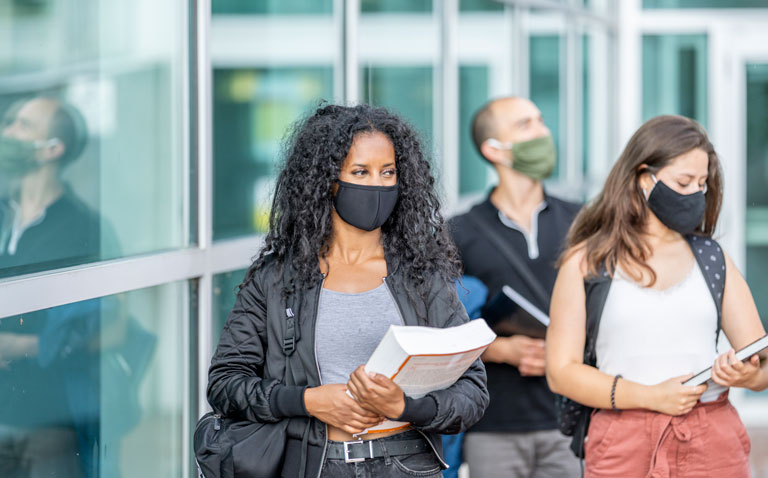Whether or not the mass return of students from universities at the end of the winter term would increase COVID-19 infection rates is unknown.
Universities have reported localised infection surges which strongly suggests that transmission occurs via peer contact rather than across age bands. In fact, it could be argued that since young people tend to have less severe disease, allowing them to return home at the end of a university term might enhance herd immunity within their age group. Nevertheless, a more likely scenario was that returning students would pass on the disease to other, older and thus more vulnerable members of their household, with the attendant increased mortality risk.
Given the uncertainty surrounding this issue, a team from the School of Mathematics, Cardiff University, Wales, set out to model the potential increased risk of transmission that might occur when university students returned home at the end of the winter semester. The team focused on the prevalence of infection at their own university and factored in various distributions of household size and the probability of secondary infections, to predict the mean expected number of such infections. For the purposes of the model, the team defined various parameters which could be easily estimated including: the prevalence of the virus or infection rate, (I); the probability of secondary transmission (S); the number of household occupants (H) and finally, the total number of students returning home (N). Using average values for S and H, the researcher performed a Monte Carlo simulation, which essentially performs a risk analysis by creating models of possible outcomes by using a range of different values for both S and H. Obtaining an accurate value for I is problematic since the value changes over time as the infection rate either rises or falls. For the present study, the value of I was varied between 1.5 and 15%. The value of 1.5% was the estimated proportion of people aged 12 – 24 infected with COVID-19 based on the office for national statistics data.
Findings
The modelling suggested a consistent probability of secondary infection of approximately 0.94, that is, each student is likely to cause less than one secondary infection. Modelling with different values of I, however, illustrated how this would change. For example, if I was 0.5%, this would potentially lead to 4.7 new secondary infections per 1000 students. In contrast, if I was set at 15%, there would be 141 infections per 1000 students. Extending this to the whole of the UK, the authors estimated that for the movement of over 1 million students, even assuming an infection rate of 1%, could equate to 9,400 additional secondary infections across the country. In their conclusion, the authors state that the simulations suggest that each infected student returning home, is expected to produce (on average) just less than one further secondary infection and thus unlikely to cause a major spike of infections.
Citation
Harper PR, Moore JW, Woolley TE. COVID-19 transmission modelling of students returning home from university. 2021 Health Systems. doi:10.1080/20476965.2020.1857214










